








FALL 2023
Publishers
sharon & steven goldstein
Associate Publisher Brandon goldstein
Editorial Director
JessiCa huMphrey-Cintineo
Art Director
BMg Marketing
Contributing Writers
Sheila M. ClanCy, MS, CheS
Kevin CzerwinSKi
StaCie roSe
audrey zona
BC Health, Beauty & Fitness is published by BC The Mag.
Find us at www.BCtheMag.com
Bergen County The Magazine is published six times a year. Mail all editorial and advertising materials to 297-101 Kinderkamack Road, Suite 135, Oradell, NJ 07649 or email materials to steven@bcthemag.com.

For advertising and information, please call (201) 6945197 or (201) 694-5196. For subscription information or to contact us, go to www.bcthemag.com.

Copyright 2023. All materials are the property of Bergen County The Magazine, LLC. and may not be copied or reproduced without written consent from the publishers.
Follow us at @bcthemag

4




A Letter from the editor
Like many women around my age, I flocked to the movie theaters last month donning hot pink, heels and “my sisterhood” to see the Barbie movie. I expected a fun night out with my girlfriends (which I did have!), but after reflecting on the movie some, I realized I also gained some empowerment.

For days, one minor part of the movie kept replaying in my mind. Towards the beginning, a journalist Barbie (maybe that’s why this miniscule scene left a mark on me?) was accepting an award and instead of saying “thank you,” she said, “I worked really hard for this, and I deserve it.”
During the movie, I chuckled. But days later as that scene kept coming to mind, I realized, “Of course, you don’t have to say thank you.” She did work hard for it, and she did deserve it. If any thanks had to be given, it’s thanks to herself.
At another point in the movie, a Barbie tells another Barbie that she looks pretty, and the response is not “thank you” but “I feel pretty.”
Even later, Barbie calls an older lady at the bus stop beautiful, and the lady responds with, again not “thank you,” but “I know it.”
In all these minor scenes in the movie, a woman owned her accomplishment, and despite my initial chuckle in the theater, I loved that for them.
So, when I saw a friend that I hadn’t seen in a while a few weeks later and she told me, “You look amazing, and you do it all – working, mom-ing, reading, exercising. You’re just amazing,” I had a great response:
“I’ve been working really hard to prioritize what brings me the most happiness and those things are it. Thanks for noticing.”
I owned my accomplishments.
It’s time to own yours.
Perfectly imperfectly yours, Jessica HumpHrey-cintineo
6
Disclaimer: This information is not intended to treat, diagnose, cure or prevent any disease. All materials provided in this publication are intended for informational purposes only. Always seek the advice of your physician or a qualified heath care provider with any questions you have regarding a medical condition before undertaking any diet, exercise, health program or procedure set out in this publication.


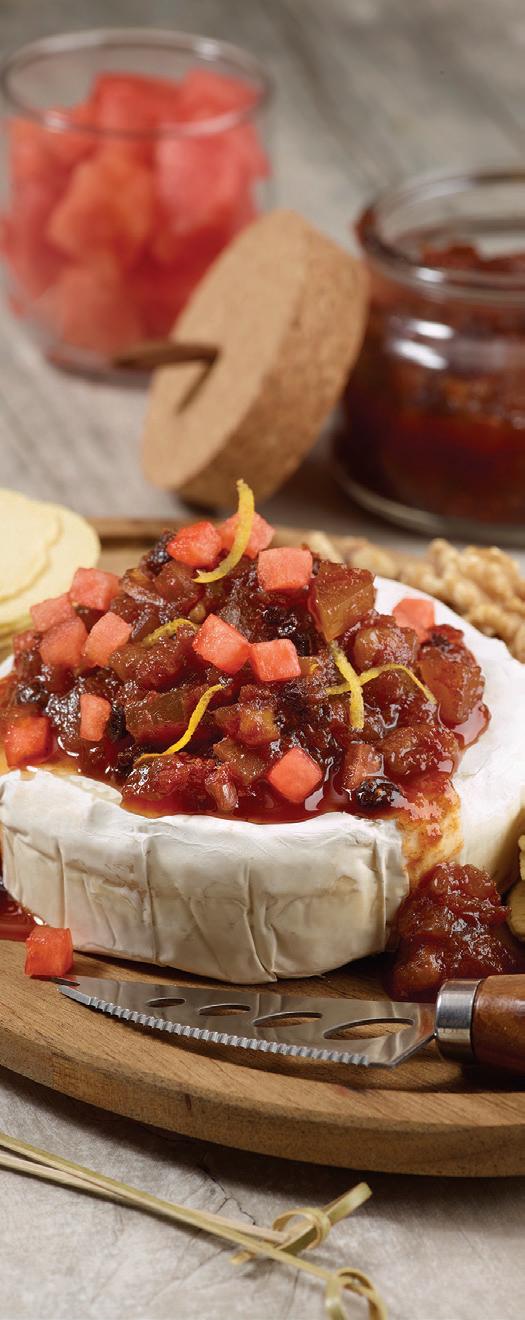
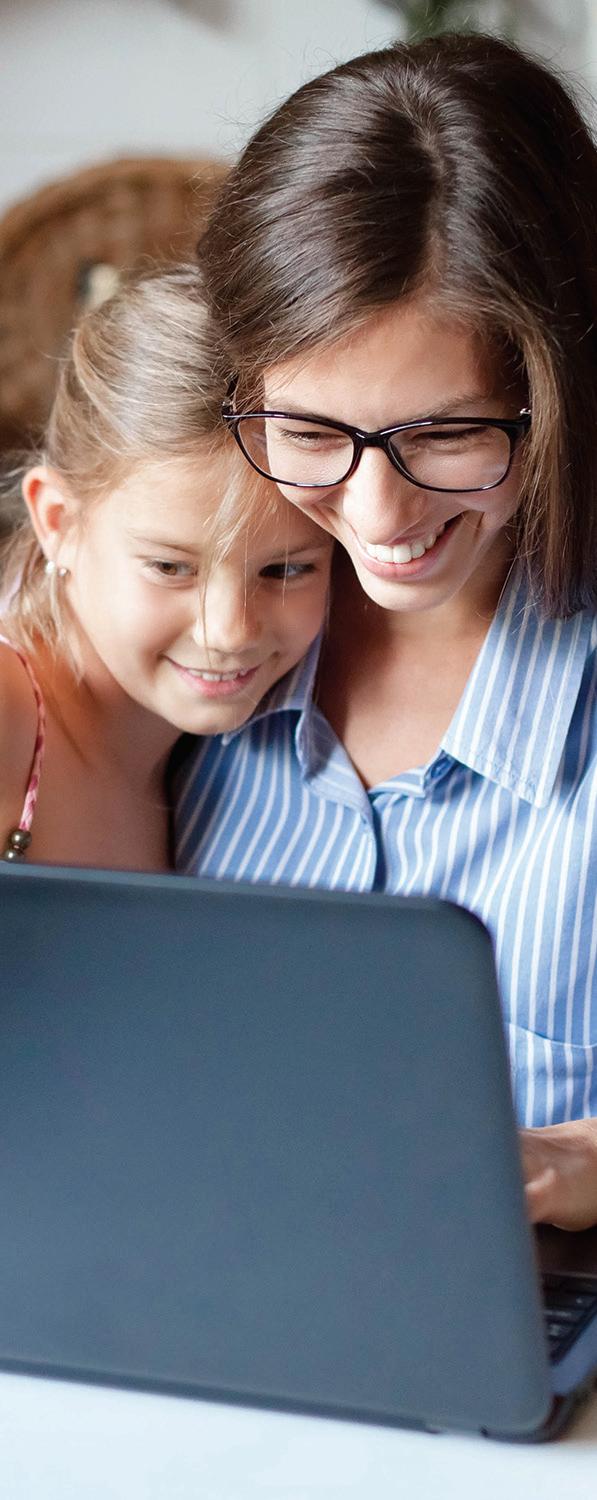
8 Table of Contents 10 Beautiful, But Sad Villa Marie Claire Receives Revitalization While Providing Comfort 16 Ditch The Pushy; Embrace The Positive How To Instill Healthy Habits For Your Family 22 Jazzing Up Your Walking Routine 26 Five Ways To Improve Your Sleep Environment 32 Protecting Children In A Digital Age 34 Supporting Teachers Four Ways To Help Lighten The Burden For Educators 36 Spread Kindness Introduce These Six Gestures Into Your Day-To-Day Life 40 Trust Your Gut 44 ‘Fall’ In Love With Family-Favorite Autumn Recipes 48 UPCOMING HEALTH EVENTS 50 Managing Aortic Aneurysms 44 10 32
40
Beautiful, But Sad Villa Marie Claire Receives
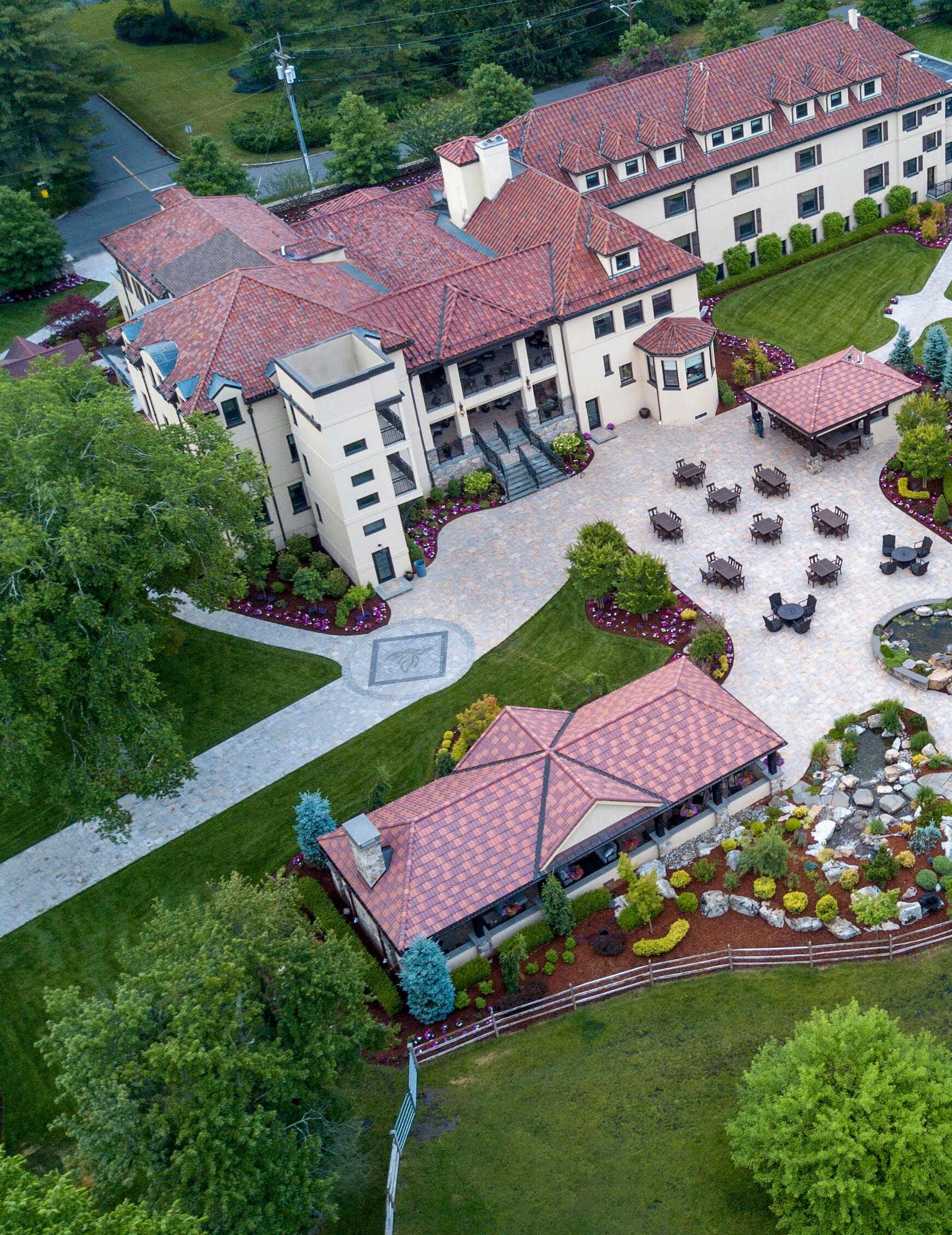
Revitalization While Providing Comfort
By kevin Czerwinski
Dr. Charles Vialotti will sometimes tear up when discussing some of his former patients at Villa Marie Claire Residential Hospice in Saddle River.

There is no sadness, however, behind Vialotti’s emotional response to the stories he shares. Rather, his stories center on hope. They center on life. They center on celebrating the joy someone has brought into the world and the happiness they have left behind.
So, while Villa Marie Claire can be viewed by many as a place where life comes to an end, don’t tell that to Vialotti and the staff of 70 that were on hand when the hospice, rebuilt and revitalized from a much-needed makeover, re-opened in August after being shuttered for three years following the COVID-19 pandemic.
Vialotti, 78, a kind and gentle physician who has worked at Villa Marie Claire for more than a dozen years, is the facility’s medical director but that title has come to have little connection with what he actually does. He’s a doctor, counselor, greeter, friend, problem solver and essentially the chief cook and bottle washer who was one of the driving forces behind transforming the building and grounds at Villa Marie Claire from an austere former convent into what resembles a luxury resort.
The renovations done at Villa Marie Claire are exquisite and detailed and if it looks like a weekend getaway for the rich famous that’s only because that’s the way it was designed to look. Vialotti’s approach was simple – make the people who come to Villa Marie Claire, either as a patient or family member of a patient, as comfortable and welcome as possible in what is a most difficult time. The paradoxical nature of the facility – it’s simultaneously beautiful and sad – isn’t lost on Vialotti. So, when he talks of his former patients, of whom many have family that have remained close friends and supporters of the facility, the tears represent not only sadness but happiness with the experience of the journey adding to the beauty.
“Family members come back here three, seven times a year to have lunch or dinner and just visit the property,” Vialotti said. “I’ll never forget the feeling one young man said to me. He said he doesn’t look on this place as where his mother died; he looks at it as the last place his mother lived. It’s not about dying. It’s about offering
Continued on page 12
people life with dignity while helping family members recover and emulate the wonderful traits that their loved ones celebrated during life. What we do is provide comfort and consolation, freedom from fear and freedom from pain.
“I am most impressed with how people are not terrified of death but are fearful of the process. We assure them that the process is a peaceful, dignified one. What impact their death is going to have on the loved
ones they leave behind is important to them and when they see their loved ones are being embraced and that they are being supported before they depart, it allows them to be able to find comfort and footing again.”
That comfort and footing has long been a part of Villa Marie Claire’s history. The facility formally opened as a hospice in 2010 after the Sisters of St. Joseph gave the building and property to Holy


12
Name Medical Center on the condition that it served as a hospice. The sisters had owned and run the property for nearly a century after it was gifted to them just prior to America’s entrance into World War I by Thomas and Marie Claire Maloney. Vialotti has been with the facility since it opened, part of what has been a 47-year career in palliative and hospice care. He moved onto the grounds at Villa Marie Claire following the death of his wife, Sandy.
Holy Name Medical Center President Michael Maron hired Vialotti and the two have worked together tirelessly to turn the facility into what it has become.
“Everything we do here is through group dialogue,” Vialotti said. “This has been totally Mike’s vision. Mike got the Board of Trustees on board and convinced enough philanthropic people to donate so we could open in 2011. Then he decided to do this project [the renovation]. He wanted it to look entirely different. Mike’s wife, Diane, has been a volunteer, buying, designing and shopping for everything that we build. His son, Patrick, is the administrator so it is truly a family thing.
“My role has only been what it has been spun out to be. Mike feels that I am the face of the Villa but as far as vision and creativity are concerned, that’s all the Marons. My part is delivery and patient care.”
The Marons and Vialotti have transformed Villa Marie Claire into a state-of-the-art facility that includes, 20 upgraded patient rooms [each with a large bathroom and space to keep visiting family members comfortable], nursing care, social services, spiritual and bereavement support, volunteer services and extensive counseling. Meanwhile, 25 percent of the patient rooms are negative pressure rooms.
“We now have three neuropsychologists,” Vialotti said. “We recognize people facing anticipatory grief, the anticipated death of a loved one and we all react differently. But very often because of unresolved issues, we find that instead of providing normal bereavement counseling, we really delve into the root cause of their overwhelming dysfunction about the death of a loved one to help them heal.”
Continued on page 14
Extensive programs are just part of what Villa Marie Claire offers. Large and luxurious guest rooms have been added for families that wish to stay on the grounds to be close to their loved ones. There are two beautiful new kitchens that guests can reserve, large dining spaces, a playroom for young children, a renovated chapel and laundry services, all for families whose time at Villa Marie Claire is extended.
“We have changed the dining experience as well,” Vialotti said. “We are going to have a maître d and more of a fine dining experience. We’ve converted the pool to a heated salt-water pool and there is a 2,000-square foot outdoor pavilion with a heated floor that family members and guests can use. That includes outdoor kitchen facilities [with a pizza oven and grill]. There are also nine different music zones where people can listen to the kind of music they like. And, we have 26 acres if people wish to wander through the woods.”
One of the services the facility offers is equine counseling, a program where those in need of support, be
it patient or family, spend time with horses. The therapy has proven to be so effective that Patrick Maron and Vialotti are working to get the proper zoning from Saddle River to build a barn on the facilities so access to the horses is available 24 hours a day.
“There is something about the bond between horses and humans that helps people open up,” Vialotti said.
There also appears to be a true bond between the people at Villa Marie Claire and those with whom they come in contact. That there is now essentially a brand-new facility thrown into the mix only serves to strengthen that bond.
“There is no way to describe what was here and what we have become,” Vialotti said. “When people come back, they are just blown away by the changes. Everything has been upgraded significantly and there is not an inch of the building that looks or functions like it did three years ago. It’s just an incredible facility and venue.”
C O M M U N I T Y F I R S T L O A N
Special financing available for properties located in Essex, Union, Hudson and now Bergen County

Owner-Occupied Fixed Rate Mortgage
5.375 5.445 15yr
Owner-Occupied Fixed Rate Mortgage

5.990 6.033 30yr
applicable property taxes, fees, insurance premiums or other related costs. Rates and annual percentages are effective as of the publication date of this ad and are subject to change. Please speak with our Mortgage Department for additional terms and conditions that may apply Subject to credit approval. Other rates and programs are available.
www.lusitaniabank.com
Branch locations in Newark, Harrison, and Hillside
(973) 344-5125 ext 129
Payment Example: $8.10 per $1,000 borrowed on a $100,000.00 15-year fixed rate mortgage at an interest rate of 5.375% will result in 180 payments of $810.47. Payment Example: $5.99 per $1,000 borrowed on a $100,000.00 30-year fixed rate mortgage at an interest rate of 5.990% will result in 360 payments of $598.91. Actual monthly payment may be higher because example does not include applicable property taxes, fees, insurance premiums or other related costs. Annual percentage rate (A P R) based on $100,000.00 loan with a 15-year or 30-year amortization term. Financing on owner occupied residential 1-4 family properties located in Essex, Union, Hudson and Bergen Counties. Minimum finance charge of $455.00. Owner occupied rate. New loans only Rates and annual percentage rates are based on 80% loan to value with 20% equity or 20% down payment. Rates and annual percentages are effective as of the publication date of this ad and are subject to change. Please speak with our Mortgage Department for additional terms and conditions that may apply Subject to credit approval. Other rates and programs are available.
Hasn’ t it been “just a dream” long enough? Lock in a low mortgage rate for up to 5 years. 3.990 5.405 1yr ARM 4.500 5.163 5/1 ARM 1 Yr ARM Payment Example: 12 payments of $476.84, then 348 payments of $565.39 based on a fully indexed rate of 5.500%. 5 Yr ARM Payment Example: 60 payments of $506.69, then 300 payments of $559.79 based on a fully indexed rate of 5.500%. APRs quoted are based on a $100,000 loan for a 1-family owner occupied dwelling with a 20% down payment, a 30 yr amortization term, and a minimum finance charge of $455.00. Adjustable-Rate Mortgages are variable rates and the annual percentage rate may increase or decrease after the initial fixed period. The renewal rate is based on an index plus a margin of 2.00%, 2.00% annual adjustment caps, a floor rate equal to the initial rate, and a 6.00% lifetime cap. Current Index is the 5 Yr Treasury Security Actual monthly payment may be higher, payment examples do not include
APPLY ONLINE NOW
TODAY’S LOAN RATES




Ditch The Pushy; Embrace the Positive
How To Instill Healthy Habits For Your Family

 By staCie rose
By staCie rose
Instilling positive health habits for your family can be like dragging a grand piano up Mount Everest. Ever feel like you’re selling a dream that nobody is buying or preaching to the choir? The very notion of cultivating good health can be overwhelming. Cultivating wellness is a holistic endeavor which requires balance, intention, attunement and tenacity. You might be saying, “Oh, is that all?” Indeed, it takes a massive effort to keep things going in the right direction. You might remind yourself that the journey, not the destination, matters most.
Life is an endless set of winding roads, a series of choices that could contribute to the betterment of yourself and those you love. It’s not always a breeze; sometimes, you will falter, fail, and need to regroup. But the large and small choices you make daily have great potential to bring your health into balance and inspire those around you.
Make Healthy Choices
It boils down to making thoughtful choices for yourself and your family. You are likely purchasing foods, planning physical fitness outings, having hard conversations, setting boundaries, packing and ordering school lunches and setting up healthy home systems. There are many choices to make. These choices are yours and will not always be the right ones, and that’s just fine. If you consistently make positive, intentional decisions, those around you are likely to follow. When you notice your efforts paying off, there will be more momentum, positivity and confidence in your ability to steer your loved ones toward a healthy life. A handy tool for choice-making is intuition. We often find ourselves instinctively knowing what’s off balance or needing attention. It could be a case of turning the tide in
the name of more nutritious, whole foods or using less toxic cleaning products in your home. It could be physical fitness that needs a reboot. You pave the way by practicing good hygiene, self-care and portraying a healthy body image. Sometimes our mindfulness practices are in need of a tune-up. Alignment and balance take a bit of intuitive energy. It’s vital to stay present with our loved ones to notice what’s amiss. Better understanding can catalyze befitting choices.
Dust Off Your Intuition
Tapping into intuition can be easier for some than others. You may feel that intuition has led you astray at times. It can take some dusting off, sharpening and trust. It doesn’t work if you don’t believe it. Nothing does. If you feel it’s failed you before, con-
sider paying closer attention to the outcomes and occasions when it serves you well or saves your butt. Intuition is undeniably your friend. So how does intuition play into wellness support for your family?


You will feel it in your gut when you focus on what’s working. It’s like a visceral pull in the right direction without overthinking. Although creating wellness can require research, advocacy and vigilance, your body sends signals and sounds the alarm when necessary. Listen in and trust the information coming from within. It will inform diet, fitness, mindfulness, self-care and everything that matters. You can better navigate wellness for yourself and your loved ones if you pay close attention to your needs and theirs. There is no one size fits all paradigm. Being part of a family means synchronizing yourself with the other members, teasing out individual
Continued on page 18
needs and acting as a team. The better you know yourself and your family’s unique challenges, the better you can ascertain things that need shifting. There are always ways to help without being pushy or off-putting. It takes practice, patience and creativity.
Be The Change You Wish to See
Modeling behavior is the best way to walk the walk while talking the talk. You likely care about the quality of foods you put in your body, nutrition, fitness and daily habits. Caring is a blessing since others will be naturally inspired and uplifted and learn to respect themselves and others. It can be that simple. Lead by example with exercise and self-care. Build a life with healthy habits. If you take pride in your well-being, you teach others that it’s essential. By keeping active and creating positive feelings about fitness, you are helping to deliver the message of importance to others. You need not be tyrannical. You are simply leading the charge. If you stay hydrated, choosing water over sugary drinks, you set the table for healthy habits. If you make sleep a priority, you teach others that sleep is a priority. You mindfully take a stand when you denounce processed food and unhealthy patterns.
Keep it Fun
While working your magic by getting your people on the wellness wagon, keep the word “fun” in mind. Food can be fun. Planning meals together, growing food and cooking and preparing meals together can be a soulful way to connect. You might get your exercise in by biking, walking your dog, playing tennis, skiing or doing things that you collectively find uplifting. If it’s fun, it’s no longer work, and there will likely be less pushback and more enthusiasm. Win/Win! If drinking water is a considerable challenge for someone, try a cool water bottle, adding a bit of citrus and encourage the non-hydrator to carry it and keep it full. If sleep is an issue, try relaxation modalities like yoga, meditation, intentional breathing, warm showers, soft bedding, salted baths, relaxing music or reading before bed. Winding down can take some work. Gently guiding others toward wellness will create a good feeling about developing nourishing habits.
Set the Rules
Sometimes it comes right down to house rules and boundaries. Some people are less strict about sugar or screen time. Others are less structured with sleep because they get the zzzs they need. If your family needs more specific and steadfast rules, then make them and stay consistent. For example, you might notice that your child has difficulty settling in after too much gaming or YouTubing too close to bedtime. Rules can be lifesavers. Kids benefit from boundaries designed to keep them healthy, happy and safe.
Practice Moderation
When you deal with extremes, it can create stress and anxiety and have a backfiring effect. If you keep your family from indulging and constantly push them to do what you think is best, it will likely get you nowhere fast. It comes down to teaching inner balance, self-awareness, and moderation. The 90/10 or even the 80/20 rule is a good jumping-off point. Eat healthy foods (most) of the time and enjoy what you like (some) of the time. Having healthy rituals and roadmaps helps avoid binging and creates lifelong balanced habits free of deprivation. You can be steadfast without being militant. It’s okay to break form sometimes and bend the rules occasionally. Home should be a joyful place.

Talk About It
While making a fine health-conscious example of yourself, reinforcing the rules using your intuition, encouraging moderation, and keeping it on the fun side, consider the importance of communication. Communication is essential to understanding “good health” and its significance. Talk with your loved ones about the things that matter most. Actions and inactions can contribute to or hinder the sense of well-being. Empower those around you to read food labels, look for artificial and toxic ingredients, and to get into the habit of moving, hydrating, resting, and practicing self-care. Your love and nurturing vs criticism or control will speak volumes. You don’t want to put your family
on edge, but you do want to make sure they understand the reality that health is wealth and that cultivating a sustainable state of wellness for the body and mind makes many of the best things in life possible.
Showing compassion for yourself and your family members is of great value. It teaches others to be gentle with themselves when the going gets tough. Communicate that physical and mental well-being are equally essential and intertwined and that there is no shame in having challenges or seeking care. Open the door to honest conversations and deeper understanding. When
people feel seen and heard, they feel loved. Validating feelings helps to build compassion and trust, which is vital to a healthy family mentality.


Stay Flexible
Since kids are growing and our bodies are constantly changing, it’s helpful to stay flexible. One approach to eating or diet may work well – until it doesn’t. One type of activity may serve you well – until it doesn’t. A medical practitioner may be a
great fit - until they’re not. Knowing yourself and your loved ones will help you use intuition to pivot and change course when things need adjusting.
Once you embrace flexibility and fluidity, things can go more smoothly. On an off week, your family may consume fast food and junk, stay up to late, leave the house a disaster, and schedules may require rapid restructuring. You could beat yourself up, express shame, and self-deprecate, or you could choose to remain flexible, move on and make next week a better one. You will be helping your family greet the days with compassion and a flexible mindset which can ensure a better outcome.
Roll Up Your Sleeves
Sometimes the less preachy, more organic way of keeping your kids healthy can happen behind the scenes. Researching health concerns, talking with medical providers, doing detective work, and confiding in family members and good friends can help you feel less anxious and isolated. Nobody can control everything or have all the answers, but asking questions, staying open-minded, and vigilant will help positively influence those you love. Sometimes being explicit about your expectations and wellness ideologies is necessary, while other times, the messages get through via osmosis. Continued on page 20
Dedicate Yourself
When we devote ourselves to cultivating wellness, we are leading by example. A positive outlook can help us weather the storms and stay buoyant. When we express our sincere joy and commitment to caring for our health, it sets a tone and gives children a sense of security. It takes time, persistence, and heart to create this ripple effect. Take it one day at a time for your sanity. Information and ideologies are constantly emerging and changing, so staying apprised of wellness developments will serve you well. It’s worth the effort when you see the light shining in the eyes of your loved ones.

Crafting a growth mindset will be your best bet and practicing gratitude for little miracles will boost your overall well-being. Sharing a grateful, abundant attitude with your family will set the stage for a life and help them to build their own inner wealth. Small incremental, bitesize changes can make a big difference so celebrate each little success. Give yourself space and grace, an occasional high-five and try not to worry yourself sick. Kids pick up on the way we navigate the world. This beautiful life is worth living well, and all your work, nurturing, guidance, and love are precious gifts to those around you.
Stacie Rose is a singer/songwriter, mother, producer, lover, blogger, integrative nutrition health coach, holistic lifestyle influencer and free spirit. She’s super passionate about making music, writing and helping others create sustainable wellness.
Jazzing Up Your Walking Routine
By sheila M. ClanCy Ms, Ches
So, you’ve recently decided to begin a walking routine - good for you! Walking is a great exercise, and you don’t have to join a gym to do it. To keep your momentum going and to keep it as part of your routine, here are some ideas to keep you motivated to keep moving.
Good shoes
The most important equipment for a successful walking program is your footwear. You should avoid going on a walk with slides, slippers, loafers, etc. You want to get yourself a sneaker that is made for walking. It will give you the support you need and help you keep your body aligned properly. Try going to the store in the afternoon when your feet are at their biggest (they swell during the day). Put both sneakers on and walk around to make sure they are comfortable. If you are already wearing sneakers but they are more than 3 or 4 years old, consider buying a new pair.
Clothing

You will probably find it most comfortable walking outside on a clear and sunny day when it’s between 65 and 70 degrees. But unless it’s icy or there is thunder and lightning, you can walk outside in any weather. Dress in layers if the weather is cold, making sure you have warm socks, and your hands and ears are covered. If you are walking on a blazing hot 100-degree day you should avoid walking in the middle of the day, dress in loose and light clothing and bring a water bottle with you. Sunscreen is also a must. If you walk in the evening after the sun goes down, wear some reflective clothing, or wear a light (There are all sorts of gadgets out there, including reflective walking vests and clip-on LED lights). Once you are in your routine and you start to experience all the different types of weather you may find yourself developing an appreciation for nature and all of its sights and sounds.
Music/Podcast/Audiobook
Now that you are in the groove, how about enhancing your experience by listening to something? You can get a free app on your phone to listen to your favorite music. You could even listen to a different genre or decade of music each day. How about music from the year you graduated high school? If you don’t feel like music, you could listen to a podcast or even an audiobook - talk about multitasking! No matter what you listen to, make sure the volume isn’t too high. You need to hear what’s going on around you - safety first!
Getting lonely
So, you really want to keep up the walking, but after the first enthusiastic week you are getting a little lonely. This is when you find a walking buddy! It could be your neighbor or friend, or this could give you some quality time with one of your kids. If the kids are young, you can play some games along the way, like counting how many dogs you see or pointing out your favorite thing about each house that you pass. If your children are older, maybe this is a good time to connect with them or talk about their day.
Location
Starting your walking program close to home is smart. Figure out how far you are comfortable going; you could even just continuously walk around your block, so you are always close to home in case you get tired. After a while though, you may get a little bored looking at the same sights. This is the perfect time to scope out new routes! You could get to know your town better by picking different neighborhoods to walk around each night. Is there a park close by? Walking through a park may be soothing with a possible waterfall, some hills, dirt paths, birds or beautiful flowers and trees along the way. It could be fun to see some kids on the swings or playing baseball. Maybe you pass some people fishing or riding bikesit’s great to breathe in fresh air and enjoy nature as you exercise and help your body to stay healthy.
Walking is an exercise almost anyone can do. It has physical, social, emotional and spiritual benefits and the only equipment you need is a good pair of sneakers. While it may make you feel a little bit tired when you first start up, after a while you will find it energizing and, in some cases, invigorating. You can do it anywhere in the world and walking can introduce you to places you’ve never been to before. Walking can strengthen your muscles, help you lose weight, help your body to control your sugar levels, clear your mind and help you catch up with a friend as you walk together. Start planning your walks today and your life will be enhanced on many different levels.

24




Five Ways To Improve Your Sleep Environment
 By sheila M. ClanCy Ms, Ches
By sheila M. ClanCy Ms, Ches
Many important functions in your body only happen when you sleep. Getting a good night’s sleep is one of the most important things you can do to stay healthy and keep your body functioning properly. While for most people, getting enough sleep as a child was an easy task, many adults struggle with sleep and they often feel groggy and sluggish during the day. While it’s uncomfortable to be tired, it’s also unhealthy and can lead to many problems down the road. In many cases you can ease your sleeping problems by making some small changes. Here are five ways to create a healthy sleep environment.
Temperature
According to the National Sleep Foundation, keeping the temperature of your bedroom between 60 and 67 will help you sleep better. A lower core temperature can help your body settle into sleep. You and your partner may prefer different temperatures in that range, so if it feels a little too cold for you, try adding a layer such as another blanket or long sleeve/long pants pajamas and socks. If it is not cool enough remove a blanket and sleep in shorts and a light short sleeve shirt with no socks, or even stick a foot out of the covers.
Light
Your body reacts to light. It expects to be awake when it’s light out and to sleep when it’s dark. Light is a main part of regulating your circadian rhythm which is basically your internal clock, knowing when to be awake and alert and when to settle down and sleep. Before we had electricity, we woke up when the sun came up and went to sleep when the sun went down. Now artificial light can throw off your circadian rhythm and your body won’t recognize the signs to power down for sleep. Blue light that is emitted from electronic devices is particularly disruptive. It is recommended that in the evening you shut off the big bright lights in the house and use dimmer lights.
Also, if you are going to be using electronic devices, try using blue blocker glasses which were created to block the blue light. It’s still best to shut down all blue lights at least one hour before bed. Once you are ready to get into bed, make sure your bedroom is as dark as possible. Blackout curtains can totally block outside light from coming in, and you can even cover up all the lights on the air conditioner, air purifier, router and the digital alarm clock with little pieces of fun tack or paper.
Noise
Sometimes you have planned out a solid sleep routine, you get in bed nice and early and then suddenly the neighbors are outside making all sorts of noise. Or your son is playing video games in the next room, and you feel like he’s sitting right next to you. Or suddenly the garbage men are collecting garbage at 6 a.m. when you were hoping to sleep until 8 a.m. Having a steady noise in your room can help drown out other sounds so they don’t wake you up. An air conditioner or a fan can provide a steady noise, or you can buy a sound machine that will offer you a variety of sounds to keep you asleep such as white noise, ocean waves or steady rain.
Pets
Our pets are important members of the family. We should feed them, play with them, walk them and love them. We should not sleep with them. Pets can make noise; they can nudge you awake, and they can end up taking the “good space” in the bed so you have to contort your body around them. They can constantly nudge you out of your deep sleep, even without you realizing it. It is best to give them their own space in the house, outside the bedroom.
Caffeine
Lots of people like to start their day with their favorite cup of coffee. It helps you to feel alert and awake to jump into your day and shake off that sleepy feeling. Caffeine is the ingredient that is giving you that jolt and for most people, unless you have high blood pressure, having coffee in the morning is a fine way to start the day. But when you drink caffeine, it goes to your brain and blocks the adenosine receptors. Adenosine is a molecule that builds up during the day, and as it builds up it makes us sleepy-it’s all part of the circadian rhythm and sleep process. It takes your body hours to flush the caffeine out of your system, so while it may be helping you to get going in the morning, you want to avoid caffeine after 2 p.m. Caffeine isn’t only in coffee; it can be found in soda, energy drinks and chocolate. For that afternoon lull, try getting up and going for a 10-minute walk to perk yourself up instead of reaching for an afternoon coffee.
These are all changeable habits that you can work on to clean up your sleep environment. Other things that may help you are to go to bed at the same time every day (including weekends), avoid eating a heavy meal right before bed and journaling to write down your thoughts so you can take stress off of your mind. If you feel as though, after trying these things, that nothing is helping you and you still can’t sleep, you could have a medical condition that is interfering with your sleep; you should contact your doctor to discuss your issues. Once you start to get enough quality sleep on a regular basis, you will feel more energetic, less stressed and you’ll be able to take on whatever the day brings you.
The Friends of Hackensack University Medical Center

The FRIENDS of Hackensack University Medical Center held their spring luncheon at Indian Trail Club. For more information, visit www.hackensackmeridianhealth.org.

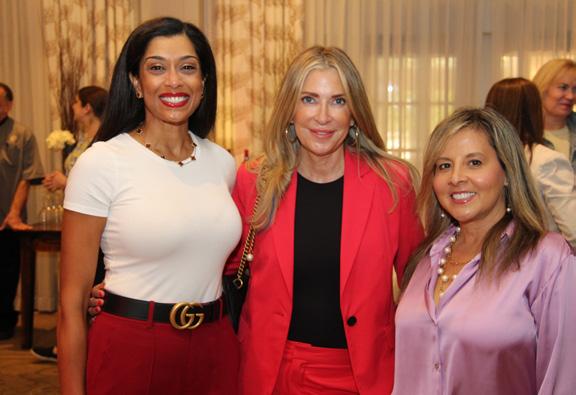
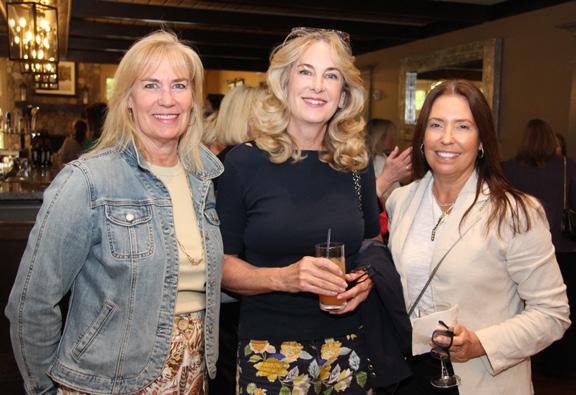
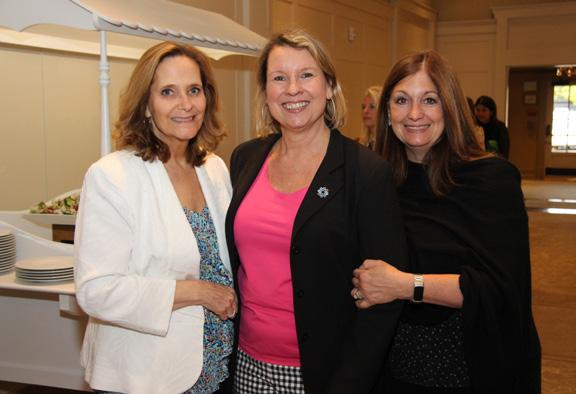












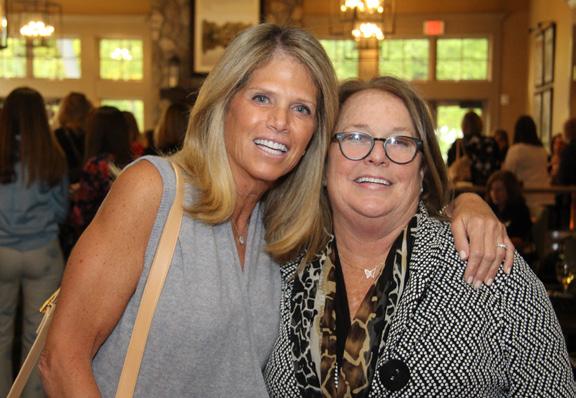
28 Social
Bonnie Weiner, Sarah Kelly
Heather Sculthorpe, Vara Edara, Niena Jerdee, Lura Lutz
Marella Keiser, Jeannie Harris
Rosita Grijalva, Debra Fabbio, Lisa Moumdjian
Barbra Krzywicki, Neena Arora
Dr. Lisa Tank, Dr. Joseph Underwood
Bamaris Lounsbury, Nadia Graham
Kathy Napolitano, Agnes Taub, Mary Krugman, Marina Chassapis
Liz Glenning, Linda Kotch, Jacqueline Miller
Nancy Kennedy, Richard Knupp, Ro Sorce
Daria Fox, Susan Azarman, Liz Weber, Yocaira Arjona
Amy Bonistalli, Cindy Harkins, Sharon Simoncini
Dr. Collette Knight, Dr. Jacqueline Hollywood, Dr. Lisa Tank, Dr. Ami Vaidya, Maureen McLaughlin
Reshma Thomas, Soneca Guadera, Sally McQuade
Priscilla Thoma, Mary Ward, Laura Metzler
Allison Fordes Sidow, Nancy Kennedy, Jackie Peticca
Valley Hospital Auxiliary Vegas Night
The Valley Hospital Auxiliary held their second annual Vegas Nigh at the Indian Trail Club. For more information, visit www.valleyhealth.com.


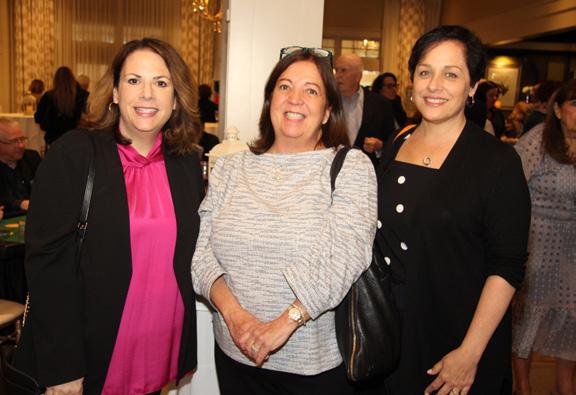

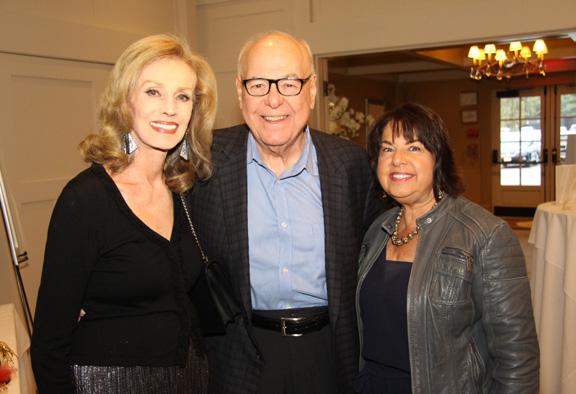


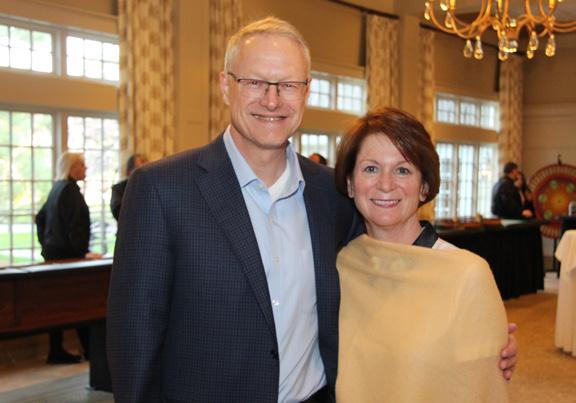










30 Social
Joe Lolino, Bonnie Dalel, Barbara Milla
Anne and Peter Swist, Les Weiss, Lisa Beslity
David and Mary-Catherine Bohan
Theresa Salaneno, Nancy Weiss
Bonnie Dalel, Elaine Heimberger
Bettina Daly, Kathy Nardella
Kristin Jackson, Alexa Green
Steve Botbyl, Ryan Barlow, Ed Hall, Pat Avallone
Jon Mechaly, Toni Modak
Tracey Ingrasselino, Philip and Fabiola Santos, Claudine Callison
Aimee Halbert, Jaclyn Mazzola
Carolann Townsend, Christine Sanchez, Elina Polyakov, Denise Meeks
Ken Sumomchi, Sunny Choinv Jane He, Lynn Holuba, Wendy McGuire Angelo and Sandy Carapezza, Rich Keenan
Diana and Frank Hughes, Rosemarie Ranuro
Protecting Children in a Digital Age
Keeping a watchful eye on your kids requires an increasing level of tech savvy many parents find intimidating. Not only are your kids vulnerable to bad actors online, but your family’s personal information could be at risk, as well. Learn how to protect your children and family in this digital age with these tips.

Elementary-Age Children
• Encourage open communication. Have conversations about what your kids see and do online and talk with them about potential dangers. Avoid lecturing in favor of an open exchange of information.
• Make their inherent interest in privacy work in your favor. Kids in this age group, particularly toward the middle school years, understand the concept of privacy and value it immensely. Use that context to help them understand what goes online is
there to stay. Talk about what kinds of information should always be kept private, including identifying details like addresses and social security numbers.
• Stay on alert. Not all apps are completely safe (even the ones you can access from trusted stores) and not all filters are foolproof. Keep close tabs on what your kids are downloading by reading comments and reviews, and regularly monitoring what kind of content they see.
32
Middle School & High School Children
• Continue talking about privacy. You can never have too many conversations about privacy. What seems like harmless sharing on social media can be quite revealing. For example, frequent posts about visits to a favorite store or restaurant can allow a predator to begin tracking behavior patterns that make your child a target. It’s also important for kids to understand how their privacy settings work. For example, settings that allow exposure to friends of friends make their visibility to strangers much broader than they may realize.
• Help manage their online reputation. Behaviors that once resulted in a day or two of hallway chatter can now live forever. Documenting mischief online is only fun until it spills over into real life and everyone sees those mistakes in full color – including prospective future employers.
• Be clear about your position on bullying. From the safe distance of a screen, it’s easier for kids (and adults) to say things they’d never say in person. Teach your
kids to handle problems constructively offline and avoid engaging in attacks on others through social media, email and other platforms.
College Students
• Reinforce the risks. Once they’re on their own, kids may feel more liberated to make their own choices online. However, college students are easy prey for identity theft and worse. Remind them what’s at stake if they fail to protect their identity and private information, like where they live and what they do on a regular basis.
• Teach smart practices. With all the independence that comes with college life, this is an ideal time for your student to take personal responsibility for his or her online security, including learning about virus protection, updating software, avoiding scams and backing up data.
Supporting Teachers
Four Ways To Help Lighten The Burden For Educators
Teachers are more than leaders in their classrooms, they are leaders in the communities they serve, committed to educating the leaders of tomorrow, and their value cannot be overstated. To provide an optimal learning environment that equips their students for success, teachers often go above and beyond, sometimes at great personal expense.
In fact, an analysis by My eLearning World estimates teachers will spend an average of $820.14 out of pocket on school supplies during the 2023-24 school year, the largest amount ever, which doesn’t include all of the hours dedicated beyond the traditional school day.
To help alleviate some of the burden, consider these ways parents, guardians and community members can contribute and support the efforts of educators.
Volunteer in the Classroom
One of the easiest ways to learn what life is like in the classroom and truly understand the needs is to spend some time there helping out. Many school districts could use volunteers to assist with one-onone tutoring, organizing library books, chaperoning field trips, speaking to classes about career paths and more. Start by checking with your child’s teacher or calling the front office to see what opportunities might be available.
Assist with Classroom Registries
Well-equipped classrooms are essential to student success, but teachers cannot do it alone. To help assist educators in reducing out-of-pocket expenses for classroom supplies, Walmart’s Classroom Reg-

34
istry allows teachers to create personalized lists of items they need, making it easy for the community to contribute to and support their efforts. Tailored to educators with personalized creation flow and recommended classroom items unique to each grade level – including popular items such as stationery, classroom decorations, art supplies, classroom treats and rewards such as stickers and “edutainment” items – teachers can share their lists quickly and easily through direct links to their custom registries. Registries are also discoverable via the registry search using the teacher’s last name and state.
Work with Your Student at Home
Not all learning takes place in the classroom. In fact, you can model the importance of your child’s education at home and create good habits such as doing homework at a certain time each night, getting a good night’s rest before school and using lessons learned in the classroom during family time. Contact your child’s teacher to learn more about the lesson plan and what you can do at home to assist with your student’s education.
Attend School Board Meetings to Voice Support
Because important decisions that impact teachers are often made by those not in the classroom every day, keeping tabs on the issues impacting teachers and local school districts can help you advocate for educators if the need arises. Start by attending a few school board meetings to learn how they operate and get a handle on issues directly impacting teachers. Then make your voice heard – or run for the school board – to support policies and actions that serve teachers’ best interests.
Spread Kindness
Introduce These Six Small Gestures Into Your Day-To-Day Life
Everywhere you look, you can see moments of kindness. From a friend sending a thoughtful text message to a stranger holding the bus for someone running late or a person paying for someone else’s coffee, acts of kindness happen every day. While these moments can have a monumental impact on the person on the receiving end, they often go unrecognized.
In fact, a study published in the “Journal of Experimental Psychology” found that performing acts of kindness improves individual well-being and leads to more positive moods. At the same time, many people underestimate the impact their kindness may have on themselves and others.
To help foster positive connection among friends, family and communities, which the U.S. Surgeon General’s advisory revealed can help reduce the risk
of serious health conditions, people should consider ways to weave moments of kindness into their daily lives.
Here are a few simple ways to show kindness
Hold the Door for Strangers
It may seem small, but holding the door for someone who is entering or exiting a building after you is a brief way to offer a helping hand and set off a contagious string of goodwill.
Send a Thoughtful Surprise
Sending someone a favorite treat, book or even a photo memory can provide a positive boost to not only the recipient but the sender as well. To take this gesture one step further, have a gift delivered
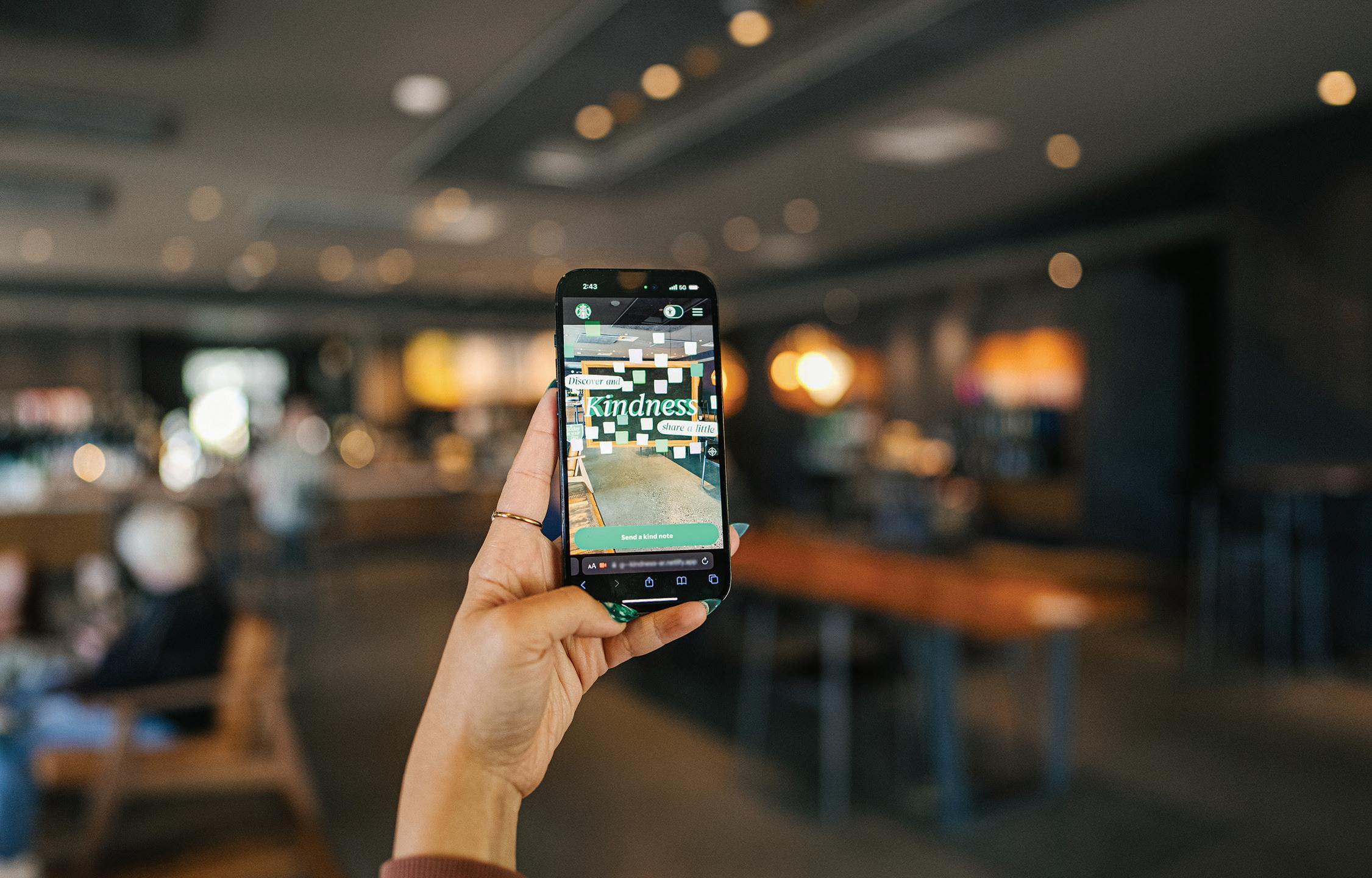
to a person you don’t know but may need a thoughtful gesture – such as a basket to a soldier overseas or senior citizens in local nursing homes or assisted living facilities.
Celebrate and Share Kindness Online
So much of the world is connected via social media. To build positive connections online, seek out digital spaces or services that emphasize and inspire kindness, such as the Starbucks Kindness Mobile AR experience. By combining the real world with augmented reality, the experience invites people to explore and share acts of kindness through notes inspired by real stories of kindness, photos, videos and Kindness Cards that can be shared on social media or by text message.
Look for Volunteer Opportunities
Volunteering time to local organizations, such as nursing homes, homeless shelters or food pantries, is an engaging and personal way to help those in your community.
Be Kind to Your Mind
By practicing gratitude, compassion and kindness toward yourself, you can spark moments of kindness that are more genuine and intentional with others. Meditation practice, such as the free, guided collection from Starbucks and Headspace, invites calm and kindness, opening the door to cultivate a more considerate relationship with mind, body and world.
“Experiencing kindness in the world begins with cultivating kindness toward ourselves,” said Dora Kamau, mindfulness and meditation teacher at Headspace. “This week, try being kind to your mind and notice how this has a ripple effect on others and the world around you.”
Offer Words of Encouragement and Gratitude
Whether it be via a text, note or conversation in-person, words are a direct way to show kindness and help individuals feel seen, appreciated and respected. Depending on what the situation requires, providing a compliment or saying, “thank you,” can make a significant impact on someone’s day.
Good Samaritan Spring Ball
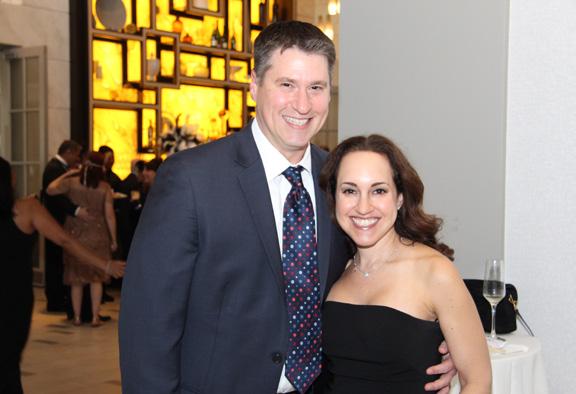
The Good Samaritan Hospital held their annual Spring Ball at Edgewood Country Club. For more information, visit www.goodsamhosp.org.








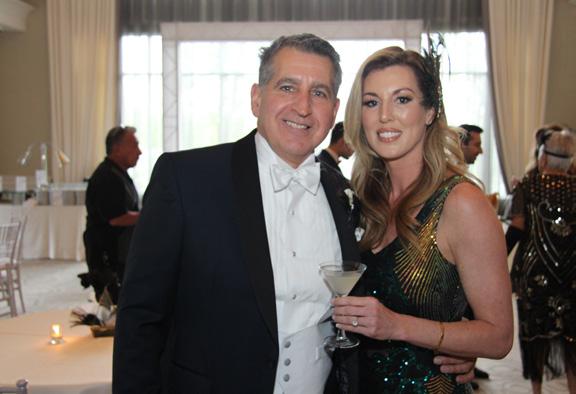



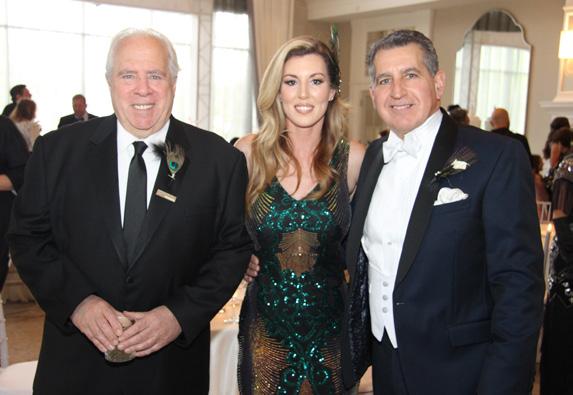


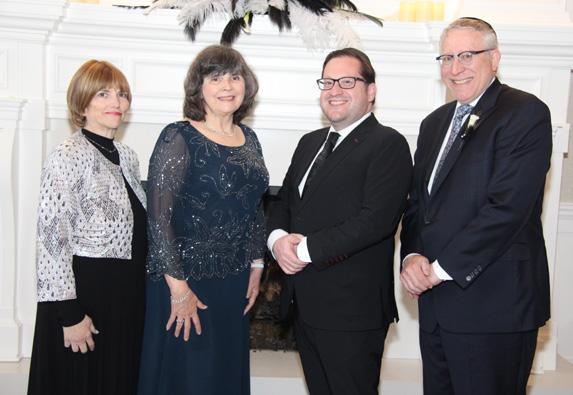

38 Social
Mark Schwartz, Tara Gold, Judi and Harvey Schwartz
Dr. Andrew and Lori Pickens
Meredith and Dr. Jeff Oppenheim
Dr. Cary and Gayle Hirsch
Dr. Michael Schwartz, Jessica Mitchell Melissa, Emma, Kara and Michael Feltham
Michele Muldoon, Mona Montal, Marie Yezzo
Dr. Stephen and Stephanie Menitove
Joe Allen, Jessica Mitchell, Dr. Michael Schwartz Barry and Laura Weiss
Marissa Forte, Ariella Gelardi
Mona Montal, Dr. Mary Leahy, Joshua Hans, Rabbi Yosef C. Golding
Dr. Sunandan and Mita Pandya
Dr. Mary Leahy, Josh Sonett, Dr. Michael Schwartz, Ken Steinglass
Jon Wilhelm, Stephanie Iglesias
Drs. Josh and Dayna Olstein
Carl Inserra Leukemia Fund Golf Outing Kick Off Dinner
The Carl Inserra Leukemia Fund held their kick off dinner at the Hackensack Golf Club. For more information, visit www.carlinserraleukemiafund.org.



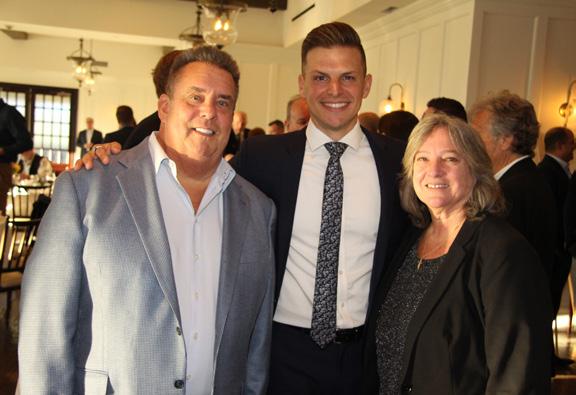



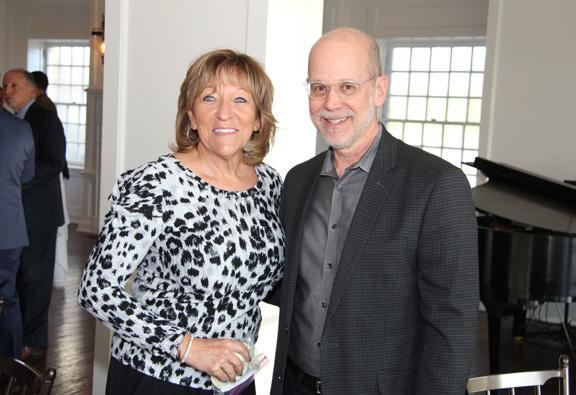




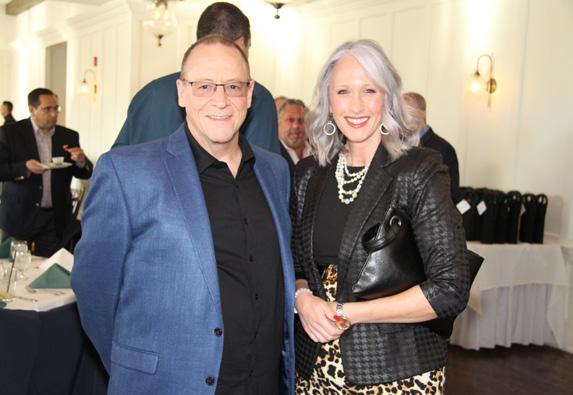
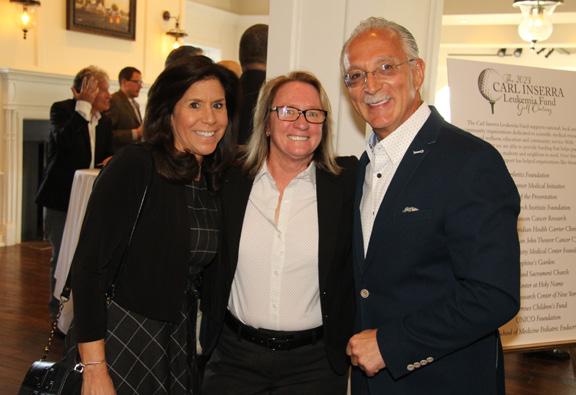


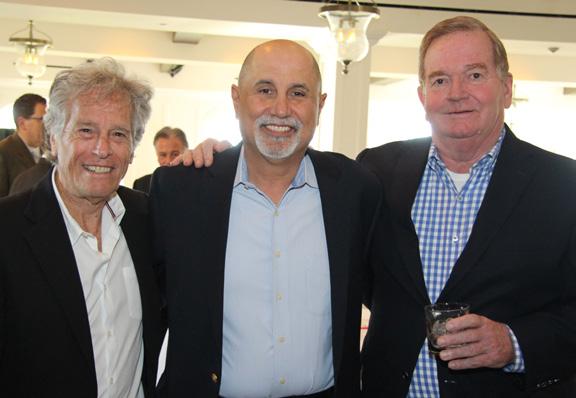
Social
Ira Keeperman, Mario Barone, Richard Borchers
Bill Ruckert, Larry Inserra, Pasi Nurminen
James Dorey, Steve Liantonio Pat Sullivan, Mike Rubin
Gregory Schmidt, Charlie Kruer, Ivan Quiles, Dave Wolf
Don Carter, Tim Farrell
Bob and Jackie Burke
Kevin Charles, Jeff Riggitano, Kyle Dupont, Rich Chamberlain Jr.
Steve Setteducati, Marisa Guastella
Marie Inserra, Vera Kovalski, Frank Siclari
Lina and Richard Colloca
Larry Inserra, Pat Sullivan
Peter Hanson, Lawrence Inserra Jr., Linda Hanson
Ron Roburto, Richard Chamberlain
Jeff Riggitano, Carl Inserra Jr., Janice Mitchell
Trust Your Gut
 By audrey zona
By audrey zona
Why is it that though fall is the time when nature starts shutting down for the year, it’s often like a new beginning for us? Maybe because fall is back-to-school season? But as adults, instead of new notebooks and pencil cases, we start looking for a fresh start to our diets, exercise routines, careers and/or hobbies.
40
This year, in addition to the usual tools in your wellness toolbox, there are new drugs that have been game changers for thousands of people who have been struggling to manage their weight. But as with any new endeavor, taking one of these drugs is far more effective if you’ve mentally and physically prepared yourself before filling your prescription. After all, you wouldn’t hike the Appalachian trail or run a marathon without laying the proper groundwork for success and using one of these weight loss medicines is no different.
The first thing that is important to understand is the connection between your gut and your brain. It might seem as if this connection is new and trendy but think about the number of times you’ve “done a gut check,” or “felt it in your gut.” Your stomach has long been an indicator of how you feel about your environment or what your brain is doing. But more recently, we’ve also realized that our guts, and what’s in them, significantly affect the way we think and feel, and how we behave.
In her book, “I’m So Effing Hungry: Why We Crave What We Crave – and What to Do About It,” Amy Shah, MD, breaks down why we have cravings and offers practical suggestions for how to recognize the biological forces that cause us to eat food we know won’t satisfy, energize or heal us. What we put into our bodies affects our mood, our ability to concentrate and our sleep patterns. Making the right choices, at the right time of day, and hacking our hunger in ways that do and don’t directly relate to food (like getting a daily dose of direct sunlight first thing every morning) will build the healthy habits that will help maintain your ideal weight for life.

One thing to try as you reset this fall is mono eating or eating just one food or one type of food at certain meals. For those of us who must make far too many decisions in a day (and really, isn’t that all of us?),
Continued on page 42
mono eating takes at least one decision off our plates (see what I did there?) each day. It allows us to take the time to notice and enjoy the food we’re eating and, because taste and texture in our meal has been simplified, we eventually retrain our brain to know when it’s full. Take advantage of the bounty of the fall and enjoy a mono meal at breakfast that includes freshly harvested fruits or veggies. Or make yourself the same food for dinner each night and save yourself some hassle at the end of a long day.
It turns out, the saying, “You are what you eat” is truer than we ever knew. Maintaining a balance in your gut microbiome by keeping your gut flora healthy and functioning is critical to the creation of serotonin, melatonin, dopamine, epinephrine and ILA (indole-3-lactic acid). But that amazing family trip you took last summer or that little getaway with your special someone may have been way less fun for your gut than it was for you, especially if it involved a plane flight. When your gut is healthy, you improve your mental and physical performance, you stave off sickness (especially important as we enter the cold and flu season), and you improve recovery times when you do get sick or injured.

So, now’s the time to add prebiotics and probiotics to your diet to repopulate your gut flora and get your microbiome back in tip top shape. Eating foods like bananas, whole grains, cabbage, almonds, garlic, onions and leafy greens will help you on the prebiotic side. Fermented foods like yogurt, sauerkraut, olives, pickles, miso and kimchi or peas, soybeans, apples and bananas are great bets to replenish your probiotics.
This fall feels full of possibility and you’re going to want to greet it with energy and vitality. The best way to do that is to listen to your gut, give it what it needs and then feel the effects of an efficient, effective gut-brain connection. If you need a little nudge or a supportive partner as you reestablish your workout or eating routines or if you want to develop healthy habits to supplement your weight lost medication, visit zohealthy.com. Our one-on-one counseling, recipes and small group programs can help you lay the groundwork for successful, lifelong wellness and health. Happy fall, y’all!
Audrey Zona is a certified Eating Psychology Coach, wellness promoter and the founder of Zo Healthy. Connect with her at https://livezohealthy.com or on Instagram, @zo_healthy.
‘Fall’ In Love with Family-Favorite Autumn Recipes
Watermelon Walnut Currant Chutney

4 cups watermelon, juiced
2 cups watermelon rind (white part), diced small
2 Tablespoons apple cider vinegar
1 1/2 cups packed brown sugar
1/2 medium white onion, sliced
1 Tablespoon minced garlic
1/2 teaspoon nutmeg
1/4 teaspoon cloves, ground
1 teaspoon lemon zest
1 lemon, juice only
2 Tablespoons currants
2 Tablespoons roasted walnuts
1 wheel brie cheese, for serving crackers, for serving
In saucepan over medium heat, reduce watermelon juice to 2 cups. Combine with watermelon rind, apple cider vinegar, brown sugar, white onion, garlic, nutmeg, cloves, lemon zest, lemon juice, currants and walnuts; simmer until almost dry.
Chill and serve over brie with crackers.
Warm-Spiced Chickpeas and Couscous with Grapes and Arugula

2 Tablespoons extra-virgin olive oil
1 small onion, chopped
1 1/2 teaspoons ground cumin
1/2 teaspoon kosher salt, plus additional, to taste, divided
1/8 teaspoon ground allspice
1 cup Israeli pearl couscous
3/4 teaspoon ground turmeric
1 1/2 cups water
1 can (15 ounces) no-salt-added chickpeas (garbanzo beans), drained
1 cup red Grapes from California, halved
2 tablespoons chopped fresh cilantro or parsley
4 cups lightly packed baby arugula
lemon wedges
freshly ground black pepper, to taste
In large saucepan over medium heat, heat oil. Add onion, cumin, 1/2 teaspoon salt and allspice; cook, stirring, until onion is softened, about 3 minutes. Add couscous and stir 1 minute to toast lightly. Add turmeric and water; bring to boil. Reduce heat, cover and simmer until couscous is tender, about 15 minutes.
Stir chickpeas, grapes and cilantro into couscous then season with salt and pepper, to taste. Transfer couscous-grape mixture to large bowl, add arugula and toss well. Serve warm or at room temperature with lemon wedges.
Watermelon Bourbon Glaze with Grilled Flank Steak
1 1/2 cups watermelon juice (approximately 2 1/2 cups chopped watermelon, blended)
2 tablespoon minced garlic
1/4 cup soy sauce
1/4 cup brown sugar
. teaspoon hot sauce
1/4-1/2 cup bourbon
2 pounds flank steak or London broil

1/4 teaspoon cornstarch
In medium saucepan over medium-high heat, reduce watermelon juice to 2/3 cup. Toward end of reduction, add garlic. Remove from heat, cool 10 minutes then add soy sauce, brown sugar, hot sauce and bourbon. Mix well.
Place watermelon-bourbon glaze in large zip-top bag. Add steak and massage to cover meat. Close bag and refrigerate 3-4 hours.
Heat grill to high heat. Remove steak from plastic bag and gently shake to remove excess glaze.
Grill steak 4-6 minutes; turn, grill 4-6 minutes, depending on thickness of steak. Remove from heat. Steak should be pink in center.
Allow steak to rest on platter or cutting board 10 minutes.
Mix small amount of watermelon-bourbon glaze with cornstarch. In small saucepan over medium-high heat, add cornstarch mixture to remaining glaze and simmer 3-5 minutes. Reduce to medium heat until mixture thickens. Remove from heat.
Cut flank steak on bias into thin strips. Drizzle watermelon-bourbon glaze over top.
Holy Name MS Center Fashion Show



Holy Name held their annual Fashion Show at Teaneck Marriott to benefit their MS Center. For more information, visit www.holyname.org/mscenter.
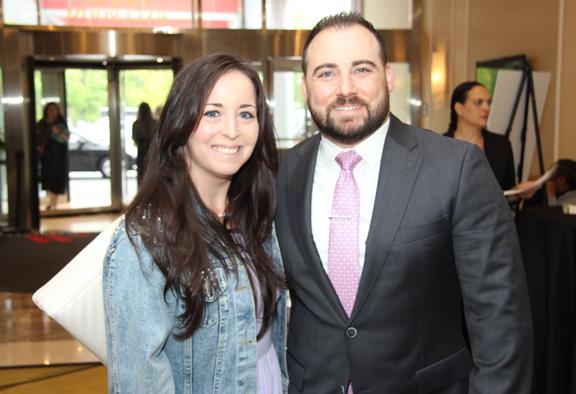
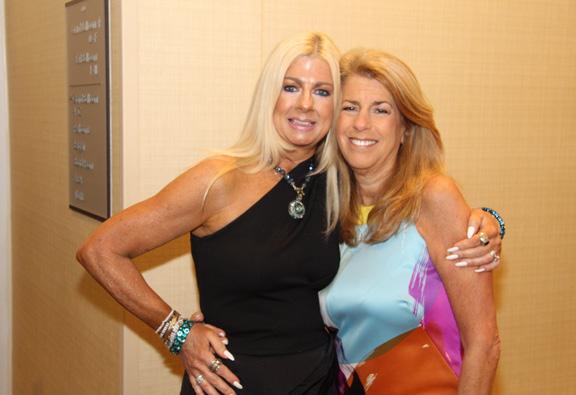

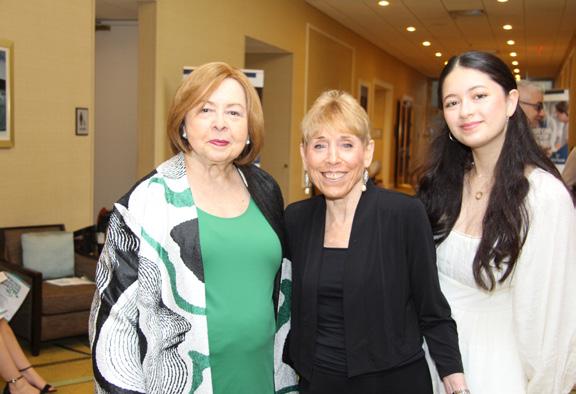
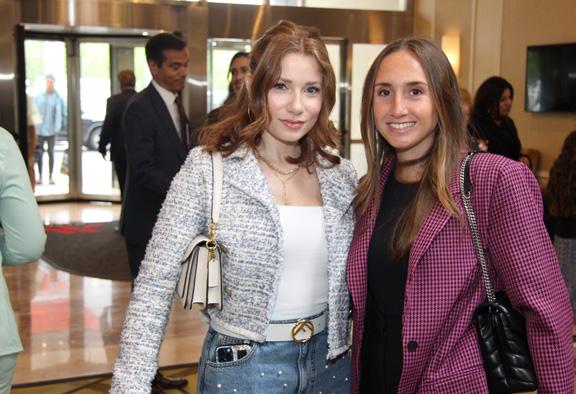


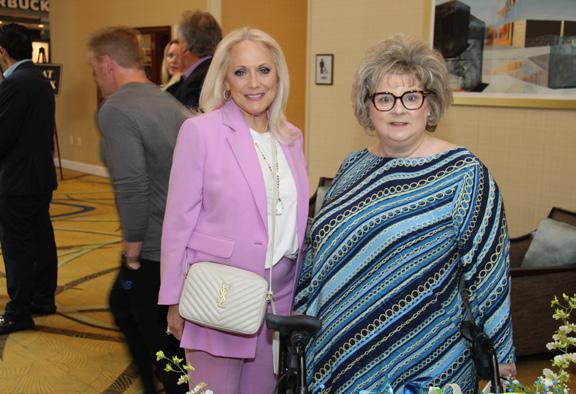







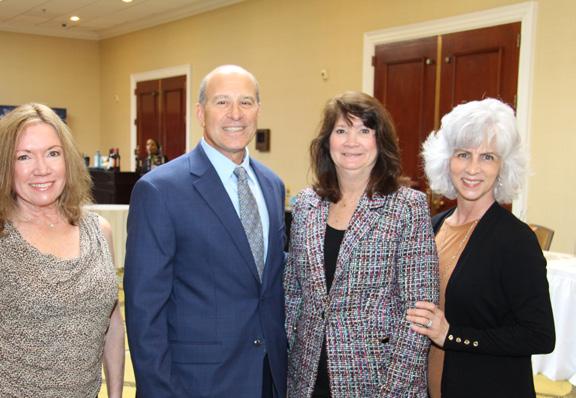
Social
Maureen Buhowski, Joe and Tina Coccaro, Theresa Glynn
Shant Temiz, Aline Frankian, Leon Temiz
Joe Sanzari, Giada Aiello, Lori Rubino Inez and Larry Inserra
Cathy Teitel, Linda Cennerazzo
June Halper, Nancy Chazen, Dr. Maryann Picone
Lyly Colon, Jennifer Lopez Gabriella D’Amico, Giuliana Iuso
Edmi and Chris Cimino Donna Lee Heyer, Theresa Larsen, Terri Savelli, Shelly Cantone
John Massey, Vanessa Aiello
Barbara Mezzina, Phyllis Polevoy, Lauren Sardineer
Brittney and Vinny Aiello Teri Capperelli, Lisa Futterman
Sharon Goldstein, Debbie Cangialosi
Sara and Susan Zurndorfer, Ellie Suzuki
UPCOMING Events
• Drumming is a wonderful way to take care of yourself, as well as lessen feelings of burnout and fatigue. Come and explore a new/old way of having fun while reducing stress on the second Tuesday of the month. September’s gathering will take place on Sept. 12 from 5:30-6:45 p.m. at The Valley Center for Health and Wellness, 1400 MacArthur Boulevard, Mahwah. To register, visit www.valleyhealth.com/events.
• Are you struggling with obesity? Edward Yatco, MD, FACS, Medical Director for Robotics and Minimal Invasive Surgery, Director, Bariatric Surgery invites you to join for an informational session discussing the medical and surgical options for treatment of obesity. The discussion will take place on Sept. 13 from 6-7 p.m. at the Dorothy B. Kraft Center, 15 Essex Road, Paramus, First Floor Conference Room #1. To register, visit www.valleyhealth.com/events.
• The Pascack Valley Medial Center’s Baby Expo will take place on Sept. 14 from 4-6 p.m. at the Community Center at Pascack Valley Medical Center, 250 Old Hook Road, Westwood. You can expect the following: learn how to create a birth plan; learn what to expect on the exciting day; an exclusive tour of the state-of-the-art birthing center; connect with physicians and staff; meet and connect with organizations offering baby-friendly services; refreshments; prizes; giveaways; and more. Register here: https://tinyurl. com/hmfbrvrw.
• If you struggle with chronic heartburn or acid reflux, a new breakthrough minimally invasive procedure may improve the quality of your life and possibly free you from long-term medication use. The virtual meeting will take place on Sept. 14 from 6:307:30 p.m. A link will be sent to you in the confirmation e-mail and the reminder email. Register at www. valleyhealth.com/events.
• Discover stress management tools for yourself and your family. Join to explore the brain science behind stress and experience how meditation, movement, acupuncture and breath work can help relieve it. Each workshop will end with a guided meditation, leaving you feeling relaxed and stress-free. Stress Management For Parents, a four-part series, will begin on Sept. 14 at 7 p.m. It will continue on Sept. 21 and 28 as well as Oct. 5. The cost is $45 for the 4-week series. Register online at https://tinyurl. com/3zea46w2. You may also email grafcenter@ ehmchealth.org or call 201-608-2377.
• The Paramus Health Department is pleased to announce the Paramus Walks program. Throw on a pair of walking sneakers and get moving on Sept. 18 at 9 a.m. In order to enter Van Saun Country Park use the Continental Avenue Entrance and take the road until Parking Lot 1 on your left side. Please, park in Parking Lot 1 (P1). In case of inclement weather, you will receive an email about any changes/cancelations. Please be sure to input the correct email address when registering. For more information, email Isabel at Ideleon@ValleyHealth. com or call 201-291-6118.
• The Paramus Health Department is proud to host an educational program about better health and well-being. Join Danielle Fabrizio, Health Educator, for a discussion about the effects on malnutrition, the importance of balanced nutrition and tips for making healthier food choices. The discussion will take place on Sept. 19 from 1-2 p.m. on Zoom. Register online at www.valleyhealth.com/events.

• Join on Sept. 23 from 9-11 a.m. for an engaging discussion about the importance of social justice and health equity, highlighting unsung hero, Henrietta Lacks. The immortal cells of Henrietta Lacks remain one of the greatest contributions to the scientific community, however, this is not a story solely about science. We will welcome members of the Lacks family, who are not only committed to preserving Henrietta’s legacy but also to educating a future generation on the importance of her HeLa cells. Keynote presented by Dr. Teri Lassiter, PhD, MPH, Rutgers, Global Health Institute. The discussion will take place at Bergen Community College, Technology Education Center, 400 Paramus Road, Paramus. Register online at www.valleyhealth.com/events.
• Stand united against ovarian, uterine, cervical, vulvar and vaginal cancers during the Sisters In Stride: Women’s Gynecologic Cancer Awareness Walk. This event will take place rain or shine at the The Luckow Pavilion, 1 Valley Health Plaza, Paramus, on Sept. 23. Join for walking, a giveaway to the first 75 to register and attend, educational information and more. Family, friends and pets are welcome. The event will be canceled in the event of thunderstorms.
• Take a mid-day pause for mindfulness meditation on Sept. 27 at 12:15 p.m. Meditation can help decrease stress and anxiety and promotes a sense of calm. Meditation is also an effective means of improving our resilience. It is best when practiced regularly. Take time to give yourself the gift of self-care. Register online at https://tinyurl.com/2985dzjt.

• Join Vedavani Tiruveedhula M.D., to learn the causes of depression, how to recognize the warning signs and treatment options to help you feel healthier and happier on Sept. 27 at 6p.m. This program is a virtual event. This webinar will last approximately 45 minutes and will have a Q&A at the end of the program. Please submit any questions you have for the speaker when registering. Register here: https:// tinyurl.com/3kd36x9k.
• A Men’s Health Event will be held on Sept. 30 from 9 a.m. to 3 p.m. at the Hackensack Recreation Center, 116 Holt St., Hackensack. Promptly at 12 p.m., Harry Carson, retired New York Giants Super Bowl champion and Pro Football Hall of Famer, will discuss the importance of prostate cancer screening, mental health and the importance of staying on track with your care with top Hackensack Meridian Health’s doctors and medical professionals. During the course of the day, activities, health screenings and 1:1 appointments will be available. This event is brought to you by Hackensack Meridian Health’s Center for Discovery and Innovation and Hackensack University Medical Center. Register here: https://tinyurl.com/554pdae9.
Men of all ages are invited to attend the event, particularly those with a higher risk of prostate cancer, including Black men and men with a family history of cancer.
• Facilitated by Danielle Fabrizio, MS, CHES, Thrive! Coordinator and mom of two, join a viewing party, enjoy light refreshments and get a copy of Dr. Bryson’s book, “No Drama Discipline,” on Sept. 30 from 1-3 p.m. at The Valley Center for Health and Wellness, 1400 MacArthur Boulevard, Mahwah. The viewing party will be followed by an interactive workshop to empower and connect parents. Space is limited and registration is required; visit www. valleyhealth.com/events.
• Want to learn about what to eat to reduce breast cancer risk and make it as easy as possible to make healthy eating part of your everyday life? You’ll get a grocery store tour to show you where to find the best health promoting foods and enjoy a recipe demo showcasing how to use them at ShopRite, 22-00 Maple Ave., Fair Lawn. This grocery store tour and recipe demo will take place on Oct. 3 from 5:30-7 p.m. Register online at www.valleyhealth.com/ events.
Managing Aortic Aneurysms
Your aorta is the main artery that carries blood throughout the body. But what happens when the aorta weakens and gets diseased? This is known as an aortic aneurysm.
Learn more from Habib Jabagi, MD, cardiovascular surgeon at The Valley Hospital and clinical assistant professor of Medicine at Icahn School of Medicine at Mount Sinai, about aortic aneurysms, associated risk factors, available treatment options and Valley’s program offering.

Q: What treatments are available?
Q: What is an aortic aneurysm?
A: An aortic aneurysm is a bulge in the aorta. This condition is often asymptomatic and typically found when patients receive diagnostic workups for other conditions or, unfortunately, when an acute, frequently fatal, complication occurs.
People at almost any age can be diagnosed with an aortic aneurysm. A patient may be screened for an aneurysm if they have a family history of thoracic aneurysms or connective tissue disease.
Q: What is Valley’s Integrated Aortic Program?
A: At The Valley Heart and Vascular Institute, we have developed the Integrated Aortic Program to provide patients with a personalized, comprehensive treatment plan to manage their aortic aneurysms. Our well-established diagnostic, surgical, and surveillance program brings together a team of aortic specialists – including cardiovascular surgeons, cardiovascular imaging specialists, cardiologists, and nurse practitioners – to evaluate and manage aortic aneurysms.
Our team focuses on diagnosis, risk assessment, and surveillance for management of this condition.
When a patient is referred to our program, our team will review their prior imaging to assess the aortic aneurysm.
Evidence-based guidelines, newly developed techniques, and collaborative efforts are used to better assess each patient’s aortic aneurysm and develop a personalized treatment plan that compliments the care the patient is already receiving from their cardiologist.
A: For most patients, regular surveillance combined with risk factor management is enough treatment to safely manage their aneurysm. Our team keeps a close eye on the aneurysm’s characteristics and provides follow-up and careful management as needed. Currently, Valley has over 1,700 patients under surveillance in the program, ranging from 12 to 95 years of age.
For patients who require more complex treatment for their aneurysm, the program offers a variety of surgical treatment options. The type of treatment recommended will depend on factors such as the type and location of the aneurysm and the patient’s age.
Each treatment plan is also designed to manage risk factors, such as high blood pressure and high cholesterol, and provide personalized education on nutrition, stress management, and safe exercise with a thoracic aneurysm.
Q: How can a patient be referred to the program?
A: If you detect an aortic aneurysm or have a family history of abdominal or aortic aneurysms or sudden death, please call Valley’s Integrated Aortic Program at 201-4478398.
To learn more, please visit ValleyHealth.com/IntegratedAorticProgram.
50









































 By staCie rose
By staCie rose












 By sheila M. ClanCy Ms, Ches
By sheila M. ClanCy Ms, Ches




































































 By audrey zona
By audrey zona
































